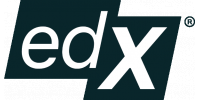- Self-paced
- Free Access
- Fee-based Certificate
Smarter Chatbots with Node-RED and Watson AI
You can't access an archived course
- 3 Sequences
- Intermediate Level
Course details
Syllabus
- Learning objectives
- Prerequisites
- Grading scheme
- Make money with chatbots
- Lab 1 overview
- 1. Create a Node-RED instance
- 2. Connect Watson services
- 3. Create your first flows
- Lab 1 solution
- Review questions
Lab 2: Build a web page and create a REST API in Node-RED
- Lab 2 introduction
- 1. Create a simple web page
- 2. Add JavaScript to your web application
- 3. Create a REST API
- 4. Consume the Watson Translator service
- Lab 2 solution
- Review questions
Lab 3: Translate text, analyze tone, add audio, and send tweets from your Node-RED application
- Lab 3 introduction
- 1. Find community nodes
- 2. Add the community nodes to the Node-RED palette
- 3. Add the Speech to Text, Tone Analyzer, and Text to Speech services
- 4. Re-create the Interpreter application
- 5. Prepare for the OK Watson application
- 6. Add link nodes to more easily view the logic of the application flow
- 7. Import the OK Watson flow
- 8. Connect to your Twitter account
- 9. Add the community nodes to the package.json file (alternative method)
- Lab 3 summary
- Lab 3 solution
- Review question
Lab 4: Create cognitive web pages and a Messenger bot
- Lab 4 overview
- 1. Obtain Facebook Messenger credentials
- 2. Create Node-RED webhooks
- 3. Create the Node-RED Messenger listener
- 4. Create a Node-RED Messenger writer
- 5. Build a video captioning application
- Lab 4 solution
- Review question
Lab 5: Build HTML web pages that use Git repositories that can reuse browser-side JavaScript
- Lab 5 introduction
- 1. Connect the Watson Conversation service to the Messenger bot
- 2. Build a Node-RED application that can reuse CSS and browser-side JavaScript
- Lab 5 Solution
- Review question
Final Exam
Summary
Prerequisite
- You will work with basic HTML and JavaScript, but the course labs will provide that code.
- If you are not familiar with Watson Assistant, you should take the course first.
Instructors
Soheel Chughtai
Early Program Manager, IBM Watson Developer Cloud
IBM
Emma Dawson
Early Program Manager, IBM Systems
IBM
Editor
International Business Machines Corporation, connue sous le sigle IBM, est une entreprise multinationale américaine présente dans les domaines du matériel informatique, du logiciel et des services informatiques.
La société est née le 16 juin 1911 de la fusion de la Computing Scale Company et de la Tabulating Machine Company sous le nom de Computing Tabulating Recording Company (CTR). Celle-ci a changé de nom pour devenir International Business Machines Corporation le 14 février 1924. On lui prête le surnom de Big Blue en référence au bleu sombre, couleur longtemps associée à l’entreprise. Dans les années 1970 et les années 1980, IBM était la première capitalisation boursière au monde.

Platform
EdX est une plateforme d'apprentissage en ligne (dite FLOT ou MOOC). Elle héberge et met gratuitement à disposition des cours en ligne de niveau universitaire à travers le monde entier. Elle mène également des recherches sur l'apprentissage en ligne et la façon dont les utilisateurs utilisent celle-ci. Elle est à but non lucratif et la plateforme utilise un logiciel open source.
EdX a été fondée par le Massachusetts Institute of Technology et par l'université Harvard en mai 2012. En 2014, environ 50 écoles, associations et organisations internationales offrent ou projettent d'offrir des cours sur EdX. En juillet 2014, elle avait plus de 2,5 millions d'utilisateurs suivant plus de 200 cours en ligne.
Les deux universités américaines qui financent la plateforme ont investi 60 millions USD dans son développement. La plateforme France Université Numérique utilise la technologie openedX, supportée par Google.

